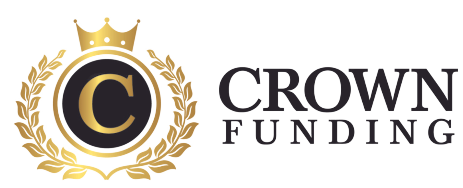
January Predictions: Will the Bank of Canada Reduce Its Lending Rate?
Introduction
Overview of the Current Economic Situation in Canada
Canada’s economy is navigating through challenging times. Inflation has seen notable fluctuations, influencing consumer confidence. Although job growth remains stable, wage increases have not kept pace with inflation, adding financial strain to households. The housing market continues to experience volatility, with soaring prices affecting affordability. Moreover, global factors like supply chain disruptions are contributing to economic instability, amplifying the challenges faced domestically.
Importance of Interest Rates in the Canadian Economy
Interest rates are a pivotal component in shaping economic dynamics. They directly affect borrowing costs for both consumers and businesses. Lower rates typically encourage spending and investment, while higher rates aim to control inflation but may slow economic growth. The Bank of Canada’s role in adjusting these rates is central to achieving inflation targets and maintaining economic stability. Any potential change in lending rates has far-reaching implications for the economy at large.
Purpose of the Article: Exploring Rate Reduction Possibilities
This article examines the likelihood of the Bank of Canada reducing its lending rate in the near future. By analyzing current economic trends and expert opinions, it aims to shed light on the potential impact of such a decision. Understanding these developments is essential for Canadians, as it can help individuals and businesses make informed financial choices.
Current Lending Rate Trends
Review of the Bank of Canada’s Current Lending Rates
The Bank of Canada’s benchmark interest rate currently stands at 5.00%. This rate directly influences loans, mortgages, and other credit products. High lending rates increase borrowing costs for individuals and businesses, reflecting the Bank’s ongoing efforts to address inflation and stabilize the economy.
Analysis of Recent Changes in Rates
Over the past few years, the Bank of Canada has made significant adjustments to its rates. Beginning in early 2022, rates climbed from a historic low of 0.25% to the current 5.00% to counter inflationary pressures. The most recent increase occurred in December 2022, with a 25-basis-point hike. This upward trend has had substantial effects on sectors like housing and consumer lending.
Comparison with Historical Lending Rates
Historically, the current rate of 5.00% is notably high. For perspective, the average lending rate over the past decade hovered around 2.5%. The last time rates reached similar levels was during the 2008 financial crisis when they peaked at 5.75%. Today’s elevated rates underscore the economic challenges and the Bank’s commitment to combating inflation.
Factors Influencing Rate Decisions
Economic Indicators
The Bank of Canada relies on key economic indicators to guide its rate decisions. Inflation, unemployment, and GDP growth are among the most critical metrics:
- Inflation: The Bank’s primary goal is to maintain inflation around its 2% target. High inflation often leads to rate hikes to cool down economic activity and stabilize prices.
- Unemployment: A high unemployment rate signals economic weakness, prompting the Bank to lower rates to encourage job creation. Conversely, low unemployment can result in tighter monetary policies.
- GDP Growth: A robust GDP indicates strong economic activity. If growth surpasses expectations, the Bank may increase rates to prevent the economy from overheating.
Impact of Global Economic Conditions
Canada’s economy does not operate in isolation. Global economic trends and events heavily influence domestic rate decisions. A slowdown in major economies can reduce demand for Canadian exports, leading to lower economic activity. Similarly, interest rate changes by other central banks can impact the Canadian dollar. A strong dollar may hurt exports, encouraging the Bank of Canada to consider rate adjustments to maintain economic competitiveness.
Government Fiscal Policies
Government spending and taxation also play a role in shaping the Bank of Canada’s decisions. For instance, increased public spending can stimulate economic growth, potentially driving inflation higher. In such cases, the Bank may raise rates to balance the economy. Conversely, fiscal austerity measures could lead to slower growth, prompting rate cuts to boost activity. Tax policies can similarly influence economic momentum and, by extension, monetary policy.
Expert Predictions and Opinions
Insights from Economists
Economists offer varied perspectives on whether the Bank of Canada might reduce its lending rate. Some suggest that if inflation continues to decline, a rate cut could be on the table to encourage borrowing and spending, aiding economic recovery. However, others caution against premature cuts, warning that it could reignite inflationary pressures. They advocate for a cautious approach based on robust economic indicators.
Diverse Opinions from Market Analysts
Market analysts also present differing views. Some believe that Canada’s strong labor market may discourage the Bank from lowering rates, arguing that maintaining the current rate is crucial for economic stability. Others emphasize the need for rate cuts to support struggling sectors and enhance consumer confidence, particularly in the post-pandemic recovery phase.
Predictions Based on Recent Economic Data
Recent data, including inflation, employment, and GDP growth, heavily influences predictions. For instance, a gradual decline in inflation has raised expectations of a potential rate cut. However, strong employment figures might lead the Bank to hold rates steady to avoid overstimulating the economy.
Potential Impact of a Rate Reduction
Effects on Consumers
A rate reduction would directly affect Canadian consumers. For homeowners, lower mortgage rates could result in reduced monthly payments, easing financial burdens. This change might also encourage prospective buyers to enter the housing market, driving demand.
Personal loans and credit card interest rates could similarly decrease, making borrowing more affordable. Increased consumer spending, in turn, could benefit businesses reliant on higher sales volumes. However, lower rates may also lead to reduced returns on savings, discouraging traditional saving practices and prompting consumers to seek alternative investments.
Impact on Businesses and Investments
Lower interest rates can significantly benefit businesses by reducing borrowing costs. This could encourage investments in expansion, equipment, and hiring, boosting economic activity. Startups, in particular, may find it easier to access capital, fostering innovation and competition. However, not all businesses may reap equal benefits, as the overall economic context plays a crucial role in determining outcomes.
Long-Term Implications for the Canadian Economy
While a rate reduction can stimulate short-term growth, it may lead to long-term challenges. Increased consumer borrowing could raise household debt levels, posing risks to financial stability. Additionally, excessive spending without corresponding supply growth could drive up inflation, potentially necessitating future rate hikes. Thus, while beneficial in the short term, rate cuts require careful management to ensure sustained economic health.
Conclusion
The possibility of a rate reduction by the Bank of Canada remains a topic of significant interest. Economic indicators, global trends, and fiscal policies will all play critical roles in shaping the Bank’s decision. While a rate cut could provide relief to consumers and businesses, it also carries potential risks that must be carefully weighed. Canadians should stay informed about these developments to navigate the potential changes effectively and make sound financial decisions.
